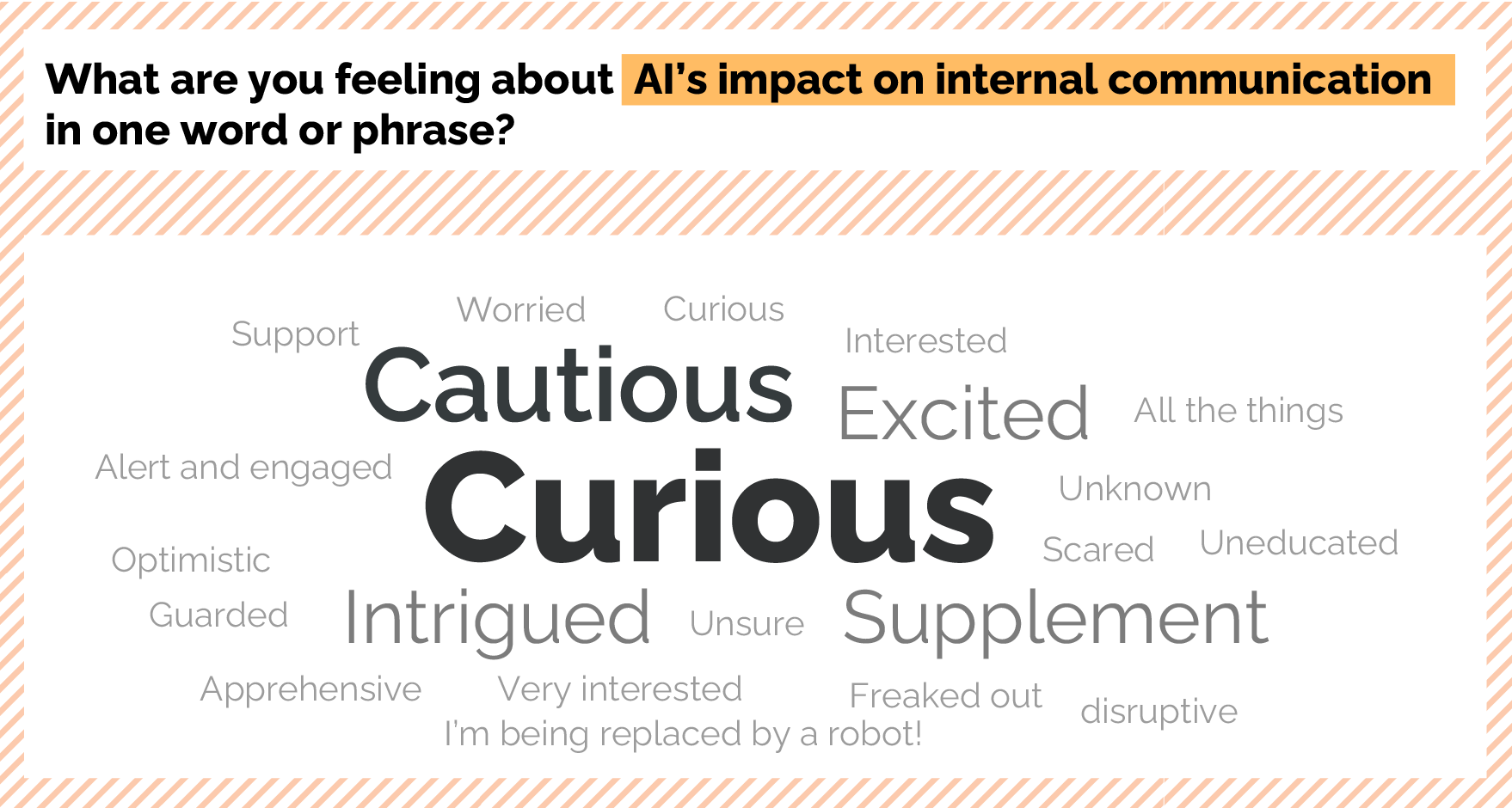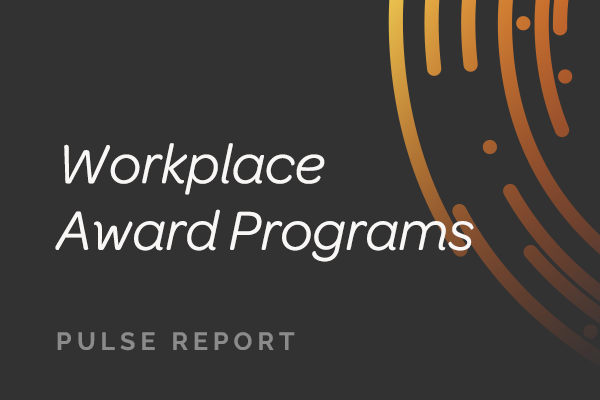
How AI is Impacting Communication
August 14, 2023
Why communicators are excited, curious, freaked out, and most of all, paying attention.

If you’re like most people, you’re probably approaching the dawn of the AI age with some combination of curiosity, trepidation and doubt. How AI is impacting communication is fueling reactions across the spectrum of emotion and logic. I hear this every day from both coworkers and clients, so believe me, I get it. For the past however many years, we’ve been told by movies, TV shows and pop cultural references not to trust AI.
But the reality is, AI isn’t anything new. It’s been around since the 1950s, quietly developing and getting more sophisticated with each passing year. It’s so common now that most of the time, we don’t even realize it’s there: we just take it for granted whenever our iPhones recognize our faces, or when Netflix suggests a new movie, or when Waze provides an alternate route.
And yet, there’s no question things feel different now. Whether it’s due to ChatGPT or some other AI tool like it, the conversation has shifted and the nature of how AI is impacting communication has changed. Which begs the question: if AI’s been around for so long, then what’s all the fuss about? And why does this all of a sudden feel different?
Generative AI
Two words: Generative AI (well, technically, three words). This is a type of deeper learning inside the broader AI universe that allows programs to process large amounts of data, analyze it for the best possible response, and then articulate that response in a way that resembles a human. Until recently, this kind of complex dialogue with a machine wasn’t possible, because it required an inordinate amount of information, breakthroughs in neural network models and approaches, and really powerful processors.
But even if this technology didn’t exist until now, the potential for it was always there. I remember as a computer science major in college listening to my wild-haired professors speak of a future where AI could generate sound indistinguishable from a human voice, or have soft skills on par with a living, breathing person. That reality seemed so far off at the time (like “The Jetsons”), but 20 years later, it’s more than practically here. No longer is AI this ancillary code running inside some broader app. Now it is the app. And it’s got personality, too, making it sound like an actual human.
For a lot of people, the potential of what was once considered science fiction now becoming a reality is pretty scary. If computers can talk and reason and sound like us, what’s to stop them from replacing us? Or for that matter, doing things much more nefarious (like “The Matrix”)?
It’s a legitimate question, one that our policymakers surely need to sort out. There’s no definitive answer on where the AI universe is headed, but as we take it day by day, I choose to lean into cautious optimism (check back in with me next week) on what these large language models can do to help make work life easier. I realize that when some people think of AI, they think of the Terminator. My take is that Generative AI build on these large language models is really not that kind of AI. A better comp for the kind of generative AI that’s in use today isn’t the Terminator. It’s C-3PO.
If you recall, C-3PO’s main function was as a translator of language. His job was to go from planet to planet, interact with the locals, and then communicate what he was learning in a way that Luke and Leia could understand. Today’s generative AI tools, such as ChatGPT, Bard and others, all do the same thing. They’re all geared toward language processing. That means they aren’t designed to wage thermonuclear war or cook dinner for little Elroy and Astro. Their sole job is to process an internet’s (and millions of digital archives’) worth of data into information we humans find useful and to respond intelligently when we have follow-up questions.
This is an important distinction that should help you move past any initial hesitation about using AI—meaning you can now focus your attention on learning how to best use this technology, what to use it for, and where its strengths and limitations lie.
So, what’s important for communicators to know about AI?
First and foremost, we need to acknowledge that AI isn’t going anywhere. If anything, it’s only going to get more foundational to our everyday work as the technology improves (just as instant messaging and social media did a generation ago). So rather than put our heads in the sand and wish it away, every one of us would be wise to start using it.
“But what about our jobs?” some will want to know. “Won’t AI simply replace us?”
Communicators are using ChatGPT
In a recent study of 1,600 global c-suite executives, 63% of companies are in the experimenting phase with AI. They’re aware of AI’s potential and are actively trying it out, using it mostly for things like composing executive summaries, writing emails and blog posts, and brainstorming pro-and-con lists. On the other hand, 37% of companies have already moved past experimenting and are incorporating AI into their everyday work as advanced or very advanced users at the organizational level. For them, the train is gathering speed. That means we communicators need to start learning to use AI and pretty soon, and not just for our own sake but because our employees will be using it, our leaders and colleagues will be using it, and we need to be proficient at it too if we’re going to be of any use to them.
But not being left behind isn’t the only reason to start using AI. It really does make a big difference! In a matter of seconds, it can give you a well-reasoned argument for a question you’ve been pondering, or the start of an important email you want to write, or a synopsis to how string theory works. It takes work that would normally require hours to do and cuts it down by a fraction of the time, allowing us to be more efficient, creative and productive.
Stay aware of how AI is impacting communication
It’s totally understandable if you’re still cautious about using AI. Being cautious is good. But don’t let your caution stop you. Because like it or not, ChatGPT and other language models like it are here to stay, and they’re likely going to change a good 50% of how you spend your workday. The implications are major, so what I encourage each of you is to keep an open mind and be explorers. We’ve journeyed from no email to instant, round-the-clock communication, from giant flip phones that stayed in our glove compartments to intuitive smartphones that never leave our pockets. Change is inevitable, and the best way to navigate it is to meet it head on.
After all, it’s not like we’re talking about the T-1000 here. It’s C-3PO. One of the all-time good hangs.
Tips for getting started with AI at work:
- Sign up for ChatGPT and start playing with it. But don’t forget, what you put in ChatGPT isn’t private – so don’t put anything in that is proprietary or confidential. And consider using the privacy functionality offered in the settings to keep your content from being used to retrain the system.
- Be open to how it might help with making your day easier. Use it when it makes sense versus doing things the manual way – you know you hate those production tasks like note taking anyway!
- Read an article or two on Generative AI – build your digital fluency – Not sure if you heard, but nerds are the new rock stars, so the more you know and understand the more confident you’ll feel and the easier it will be to embrace the opportunity.
- Help your company – A cross-functional team to look at AI and communicate to employees can really help to align your company around a plan to manage the use of these AI language tools. Every company should be prepared to clearly define and communicate company expectations for all roles and audiences – including when and how not to use AI.
- Read up on ChatGPT and other language models. It’s important to know how they’re being integrated into the applications you use every day (go to YouTube and search for Microsoft Copilot, for example).
Contributors:
Melanie Barna
Senior Vice President
Melanie oversees our diverse team of writers, designers, illustrators and developers. Drawing on her vast knowledge of computer science, brand marketing and creative design, she makes sure every project delights customers in both visual and narrative ways. A former Emmy judge and marathon runner, she serves on ROI’s leadership team.




